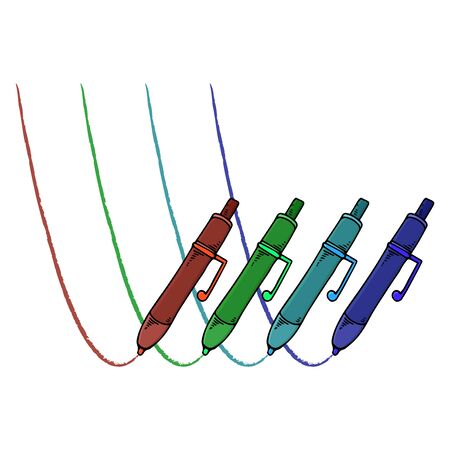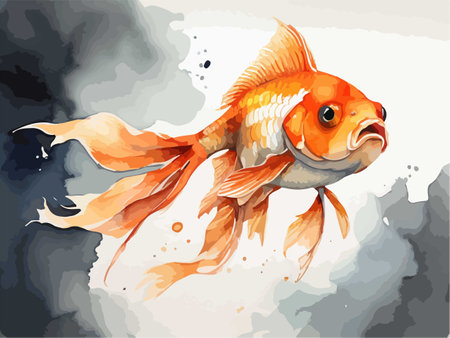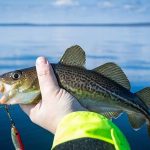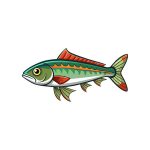Understanding Dry Fly Fishing
Dry fly fishing is one of the most classic and visually exciting forms of fly fishing. It involves casting a lightweight, buoyant fly that floats on the surface of the water, mimicking natural insects that trout feed on. This method allows anglers to see the strike as it happens, creating an unmatched thrill when a fish breaks the surface to take the fly.
What Makes Dry Fly Fishing Unique?
Unlike other styles of fly fishing, such as nymphing or streamer fishing, dry fly fishing focuses solely on surface activity. The goal is to imitate adult aquatic insects like mayflies, caddisflies, and stoneflies in their final life stage when they float on top of the water. This makes presentation, timing, and accuracy essential.
Comparison with Other Fly Fishing Styles
| Style | Target Zone | Main Imitation | Visual Strike |
|---|---|---|---|
| Dry Fly | Surface | Adult insects | Yes |
| Nymphing | Below surface | Nymphs & larvae | No (feel-based) |
| Streamer Fishing | Below surface (deeper) | Baitfish & leeches | Sometimes visible |
A Brief History of Dry Fly Fishing
The roots of dry fly fishing trace back to 19th century England, particularly on the chalk streams of southern England where clear waters allowed anglers to sight-fish for rising trout. The techniques eventually made their way to North America, where they evolved to suit local rivers, insect life cycles, and trout behavior. American anglers adapted these methods for famous waters like Montana’s Madison River and Pennsylvania’s Spring Creek.
Why Anglers Love It
There are several reasons why dry fly fishing remains a favorite among many anglers:
- Visual excitement: Watching a trout rise to sip your fly is an unforgettable experience.
- Challenge: It requires precision casting and careful observation of hatches and water conditions.
- Connection with nature: Success depends on understanding insect life and fish behavior in real-time.
Best Times for Dry Fly Fishing
| Season | Main Hatches | Ideal Conditions |
|---|---|---|
| Spring | Mayflies, Caddisflies | Mild temps, overcast skies |
| Summer | Caddisflies, Terrestrials (ants, beetles) | Mornings & evenings cooler times of day |
| Fall | Blue-winged olives, Midges | Crisp days with light wind |
Whether youre brand new to fly fishing or looking to refine your skills, understanding the basics of dry fly fishing sets the foundation for everything else—matching the hatch, selecting patterns, and developing presentation techniques that bring those surface takes.
2. Essential Gear and Fly Selection
Getting started with dry fly fishing means having the right gear. Each piece of equipment plays an important role in making your time on the water both enjoyable and successful. Let’s break down what you need and how to choose the best flies for different conditions.
Rods, Reels, Lines, and Leaders
Your rod, reel, line, and leader work together as a system. Choosing gear that matches your fishing environment is key to casting accurately and presenting your fly naturally.
| Gear | Description | Recommended Specs |
|---|---|---|
| Rod | A lightweight fly rod helps deliver delicate presentations on the water’s surface. | 8’6” to 9’0”, 4 or 5 weight |
| Reel | The reel holds your line and provides drag when fighting fish. For dry fly fishing, weight balance is more important than drag power. | Lightweight reel balanced with rod |
| Fly Line | Floating lines are essential for keeping your dry fly on the surface. | Weight-forward floating (WF-F) |
| Leader & Tippet | The leader tapers down to a fine tippet that allows a natural drift without spooking fish. | 9 tapered leader with 4X–6X tippet |
Selecting the Right Flies
The magic of dry fly fishing lies in matching the hatch—that means choosing flies that resemble the insects trout are actively feeding on. It’s not just about having flies; it’s about having the right ones at the right time.
Consider Water Conditions
- Crisp, clear water: Use smaller, more realistic patterns like Blue-Winged Olives or Adams in sizes 16–20.
- Turbid or fast-moving water: Go for larger, high-floating patterns like Stimulators or Humpys that are easier for both you and the fish to see.
Match the Hatch
If you notice insects flying around or sitting on the water’s surface, try to match their size, shape, and color with one of your flies. A few go-to patterns to always carry include:
- Pale Morning Duns (PMDs)
- Caddisflies (Elk Hair Caddis)
- Midges (Griffith’s Gnat)
- Mosquitoes (Parachute Adams)
A Simple Fly Box Setup
| Name | Size Range | Best Time/Conditions |
|---|---|---|
| Pale Morning Dun | #14–18 | Latespring to midsummer, clear days |
| Caddis (Elk Hair) | #12–18 | Dusk and early morning, riffles and runs |
| Midge (Griffith’s Gnat) | #18–22 | Calm water, winter or early spring |
| Parachute Adams | #14–20 | A versatile pattern for various hatches |
The more familiar you become with local insect life and river conditions, the better youll get at choosing flies that work. Keep experimenting and observing—half the fun of dry fly fishing is figuring out what gets those fish rising!

3. Reading Water and Spotting Rises
One of the most important skills in dry fly fishing is learning how to read the water and identify where trout are feeding near the surface. Understanding how rivers and streams flow—and how trout interact with that environment—can make all the difference between a slow day and a successful outing.
Understanding River Structure
Trout prefer areas where they can feed efficiently while expending as little energy as possible. These spots often include:
| Water Feature | Description | Why Trout Like It |
|---|---|---|
| Pocket Water | Small, calm areas behind rocks or obstructions | Provides cover and breaks in current for easier feeding |
| Eddies | Circular currents that form behind obstacles or bends | Collects drifting insects, making it a buffet for trout |
| Slicks | Smooth surface seams between fast and slow water | A natural conveyor belt for food, easy to feed without moving much |
| Shallow, fast-moving water with broken surface | Aerated water full of oxygen and insects; smaller trout often feed here | |
| Pools | Deeper sections of slower-moving water | Larger fish rest here and rise when food is plentiful on top |
Spotting Rise Forms
A “rise” is when a trout comes to the surface to eat an insect. Learning to recognize different rise forms helps you match your fly presentation to what trout are actually eating.
| Rise Form | Description | What It Tells You |
|---|---|---|
| Sip Rise | A gentle dimple or swirl on the surface, almost like a raindrop fell upward | The trout is feeding on small insects like midges or spinners just in or on the film of the water surface. |
| Splashy Rise | A noisy, aggressive rise that creates a splash or disturbance in the water | The fish may be chasing caddisflies or larger insects fluttering on top. Try an active dry fly pattern. |
| Bulge Rise (Subsurface) | You see a disturbance but no actual fish breaking the surface | This means trout are feeding just under the surface—consider using an emerger pattern or soft hackle. |
| Dorsal/Tail Rise | You see only part of the fish’s back or tail break the surface slowly | The trout is feeding very delicately—match-the-hatch with precision. |
The Trouts Feeding Lane
Trout don’t chase after food; they wait in specific lanes where current naturally brings them their meals. When casting, aim your fly upstream so it drifts naturally into these lanes. Watch closely: even a subtle head turn or flash can mean a trout is taking interest.
Tips for Spotting Rises More Effectively:
- Wear polarized sunglasses to reduce glare and improve visibility through the surface.
- Keep your eyes still—movement attracts movement. Focus on one section at a time.
- Look during low-light conditions like early morning or evening; this is when most insect activity occurs.
- If youre unsure whether its wind or a rise, watch for repetition—rises usually occur in patterns.
A Local Insight:
If youre fishing streams across Montana or Colorado, keep an eye out near grassy banks and overhanging trees—these areas often drop terrestrial insects into the water, triggering steady rises from waiting trout. In high-traffic rivers like those in Pennsylvania or California’s Sierra Nevada, look for less obvious holding lies where pressured fish feel safer feeding near the surface.
The more time you spend observing the water before making your first cast, the better your chances of success. Dry fly fishing isn’t just about throwing a fly—it’s about being tuned into nature’s rhythm above and below the surface.
4. Casting Techniques and Presentation
When it comes to dry fly fishing, casting isnt just about getting your line out—its about presenting your fly in the most natural way possible. Mastering specific casting techniques is key to fooling wary trout and increasing your chances of a solid hook-up. Let’s break down some essential casting skills tailored for dry fly fishing.
Reach Casts: Setting Up the Perfect Drift
The reach cast is one of the most valuable tools in your dry fly arsenal. This technique involves moving your rod upstream or downstream at the end of your forward cast. The goal? To position your line so that it lands with a slight curve, reducing drag and allowing your fly to drift naturally with the current. Its especially useful when youre casting across fast-moving water into slower seams where trout like to hold.
Drag-Free Drifts: The Secret to Fooling Trout
Trout are smart—and they know what real insects look like on the surface. If your fly drags unnaturally, chances are they’ll pass it up. Achieving a drag-free drift means your fly floats downstream at the same speed as the current, just like a real insect would. To pull this off, youll need to combine good mending techniques with accurate casts.
Tips for Achieving a Drag-Free Drift
- Mend quickly: Right after your cast hits the water, lift and reposition the line upstream to reduce tension.
- Use slack line casts: Techniques like the parachute or wiggle cast introduce slack into your line, helping delay drag.
- Position yourself wisely: Approach from downstream whenever possible to minimize line contact with tricky currents.
Other Useful Casting Techniques
| Casting Technique | When to Use It | Benefit |
|---|---|---|
| Roll Cast | When there’s no room for a backcast (tight brush or trees) | Allows you to cast efficiently in tight quarters |
| Parachute Cast | When you need a soft presentation with slack | Reduces drag by giving more natural drift time |
| Curve Cast | Around obstacles or tricky current seams | Lands fly in hard-to-reach spots while keeping line off conflicting currents |
Tuning Your Presentation Game
Presentation is everything in dry fly fishing. Even with the perfect pattern, if your fly doesn’t land softly and float realistically, fish will ignore it. Always aim for gentle landings—no splashes—and watch how your leader and tippet lay out on the water. Adjustments as small as changing tippet length or switching casting angles can make all the difference.
Quick Pro Tip:
If fish are rising but ignoring your fly, try shortening your tippet or adding floatant to keep your fly riding high. Sometimes its not what youre using—its how youre using it.
Nailing these casting techniques takes practice, but once you get the hang of them, youll see more consistent rises and hookups on the water.
5. Matching the Hatch and Fly Patterns
If you want to consistently catch trout on dry flies, one of the most important skills to develop is learning how to “match the hatch.” This means selecting a fly that closely resembles the natural insects trout are feeding on at any given time. Understanding basic entomology can give you a serious edge on the water.
Understanding the Hatch
A “hatch” refers to the emergence of aquatic insects from their nymph or larval stages into adults, often happening in large numbers. Trout become highly selective during these events, focusing almost exclusively on the insects hatching at that moment. Knowing which insects are likely to be present in your local stream during each season can help you prepare better fly selections.
Common Insects in U.S. Trout Streams
| Insect Type | Common Species | Prime Season | Dry Fly Imitation |
|---|---|---|---|
| Mayflies | Blue-Winged Olive, Hendrickson, Sulphur | Spring to Fall | Parachute Adams, Comparadun, Sparkle Dun |
| Caddisflies | Elk Hair Caddis, Tan Caddis | Late Spring to Summer | Elk Hair Caddis, CDC Caddis |
| Stoneflies | Golden Stone, Salmonfly | Early Summer | Stimulator, Sofa Pillow |
| Terrestrials (land-based bugs) | Ants, Beetles, Grasshoppers | Summer to Early Fall | Chernobyl Ant, Foam Hopper, Hi-Vis Beetle |
How to Match Your Fly Effectively
The key to matching the hatch isnt just picking any fly from your box—it’s about observing what’s happening around you. Look for insects flying above the water or floating downstream. You can also turn over rocks or use a small net to collect samples from the stream surface. Once youve identified whats hatching, select a fly that matches in size, shape, and color.
Tried-and-True Dry Fly Patterns
You don’t always need an exact match. Sometimes a well-presented general pattern can do just as well. Here are some versatile dry flies that have proven effective across American waters:
- Parachute Adams: Great all-purpose mayfly imitation thats easy to see and floats well.
- Elk Hair Caddis: Durable and high-floating; perfect for caddis hatches or rougher water.
- Royal Wulff: A classic attractor pattern that works when nothing else seems to.
- Chernobyl Ant: Big and visible terrestrial fly ideal for summer fishing.
- Sparkle Dun: Excellent for imitating emerging mayflies stuck in the surface film.
Final Tip: Keep It Local
If youre new to an area or planning a trip, swing by a local fly shop. They’ll have up-to-date info on current hatches and recommended patterns for nearby streams. Matching the hatch isnt just about science—its also about connecting with your environment and making smart choices based on observation.
6. Advanced Strategies and Seasonal Tactics
Once youve got the basics of dry fly fishing down, its time to take your skills to the next level. Advanced strategies can make a big difference when youre fishing high-pressure waters or targeting picky trout. Understanding how trout behave in different seasons and knowing how to adjust your approach can be the key to landing more fish.
Fishing High-Pressure Waters
Popular rivers often see lots of anglers, which makes the trout extra cautious. In these conditions, presentation is everything. Use longer leaders (12-15 feet) with finer tippets (5X to 7X) to help your fly land softly on the water. Approach quietly and try casting from a lower angle to avoid spooking the fish.
Tips for Pressured Water:
| Strategy | Why It Works |
|---|---|
| Use smaller flies (#18-24) | They look more natural and are less likely to alarm trout. |
| Match the hatch exactly | Picky trout will ignore anything that doesn’t perfectly mimic natural insects. |
| Kneel or crouch when casting | Lowers your profile and reduces chances of being seen. |
Tackling Selective Trout
Selective trout have seen it all and won’t bite unless everything looks just right. Pay close attention to rise patterns and feeding behavior. If a trout is sipping gently, its probably eating midges or spinners—so tie on something tiny and delicate. Make sure your drift is drag-free by mending your line properly or using slack-line casts.
Selective Trout Checklist:
- Observe before you cast—watch what insects are flying around or landing on the water.
- Use CDC (Cul de Canard) flies—they sit low on the surface and imitate emerging insects well.
- Add floatant carefully—too much can make your fly look unnatural.
Seasonal Tactics
The time of year greatly affects insect activity and trout behavior. Knowing what hatches happen in each season helps you pick the right fly pattern and technique. Heres a quick guide:
| Season | Main Hatches | Tactics |
|---|---|---|
| Spring | BWO, March Browns, Caddis | Nymph early in the day, switch to dries during afternoon hatches. |
| Summer | Pale Morning Duns, Tricos, Terrestrials (ants, hoppers) | Crisp morning fishing; switch to terrestrials as temps rise. |
| Fall | Midges, Blue-Winged Olives | Sneaky presentations with small dries; fish are spooky in low flows. |
| Winter | Midges, occasional BWO on warmer days | Sight-fish during warm spells; target slower pools where fish conserve energy. |
A Few Final Tips for Going Pro
- Tie your own flies: Customizing size and color based on local conditions gives you an edge.
- Cary multiple leader types: Adjust quickly based on fly size and water clarity.
- Keeps notes: Track which patterns work best during specific times of year in your favorite spots.
Diving into advanced dry fly fishing techniques isnt just about catching more fish—its about reading the water better, understanding what the trout are telling you, and becoming part of their world. When you start thinking like a trout, success follows naturally.


